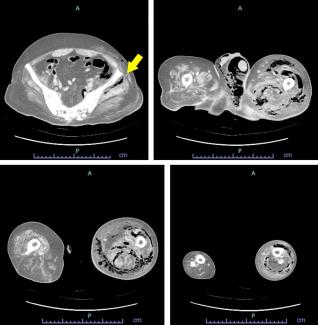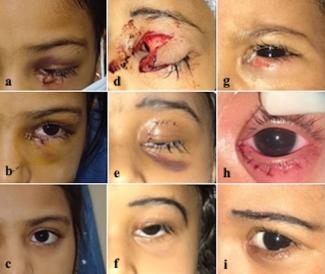ADVERTISEMENT
Aesthetic Orthognathic Surgery: Patient Consultations, Occlusal Relationships, and Virtual Surgical Planning
In this interview ePlasty spoke with Derek Steinbacher MD, DMD, FACS, to gain a better understanding of aesthetic orthognathic surgery. Dr Steinbacher discusses the importance of patient consultation and basic concepts of occlusion, and explains why surgeons should utilize virtual surgical planning.
What are the goals of the patient consultation in aesthetic orthognathic surgery? Are there best practices for the patient consult you would recommend?
Patients can present with a variety of concerns relating to their facial appearance or balance.1 Some common scenarios include: the sense that the middle part of their face or upper jaw is deficient and/or the lower jaw or chin is too prominent or long. Another frequent complaint is having too small of a chin and/or lower jaw. The third issue, that may be separate or superimposed, is that there is some amount of asymmetry in the cheeks, face, nose, chin, and so forth. Patients can notice trouble closing their lips, feel their smile is unbalanced or unattractive (too gummy, too buried, or too narrow, for instance). Some patients may assert that their cheeks and/or jaw angles or jaw definition (jawline) is either too prominent or not defined enough. Patients may also recognize a nasal deformity or imbalance that accentuates or contributes to their overall unhappiness with their facial appearance.
During the consult the first step is to determine what bothers the patient the most and what they hope to achieve with treatment. As with any consult, it is important to recognize the patient’s objectives, and have a frank conversation as to what is and what is not achievable. A physical exam, including airway, occlusal, nasal, and TMJ assessment is undertaken. Photographs from many angles are obtained, and I obtain a 3D photo on every patient, as well as appropriate radiologic tests and dental casts (or 3D scans) for study and planning. I spend time explaining the sequence and timing of surgery, and expectations relating to outcome and recovery. We use several visual aids, printed instructions, YouTube videos, and show other before and after results.
Can you speak to the importance of understanding basic concepts of occlusion in orthognathic surgeries?
The occlusion (or bite) represents one limb of stability in the upper and lower jaw relationship.2 Many cases of orthognathic surgery entail moving one jaw with respect to the other to improve or “normalize” the occlusion. However, in some, especially aesthetic orthognathic cases, the baseline occlusion is already good, and the jaws are moved to improve facial support, symmetry and balance, while maintaining the pre-existing occlusion. Similar to the relationship of breathing or nasal airflow in rhinoplasty–where following rhinoplasty the nasal airflow should be the same or better–it is never worse than before. This is true in orthognathic surgery, as well, where the occlusion should ideally be improved following intervention.
An understanding of occlusal relationships, and orthodontic goals before and after surgery are necessary to properly execute orthognathic surgical cases. The occlusal plan should be discussed with the orthodontist, and planned as the baseline of the surgery.
Do you perform rhinoplasty/genioplasty in conjunction with upper/lower jaw surgeries? How do you stage these?
In many/most of my aesthetic orthognathic cases I do perform genioplasty simultaneously. Adjustment of the chin enables fine tuning of facial balance, profile and lip position.3 The nose helps define the center of the face and its appearance and function can be altered by orthognathic surgical movements – particularly those affecting the maxilla (Le Fort I).4 I’ve written extensively on this topic, and yes in the indicated cases rhinoplasty is performed as a complimentary procedure with aesthetic jaw surgery.5 In most cases I prefer to stage this to some point in time after the orthognathic surgery, but in some cases we do both sets of procedures simultaneously.6
Do you utilize virtual surgical planning? How do you plan these surgeries, considering the soft tissue changes related to bony movements?
Absolutely. 3D planning has dramatically improved our fidelity and accuracy in performing orthognathic surgery–especially aesthetic/cosmetic jaw surgery.7-9 Not only does it streamline the logistics for manipulating records, but, most importantly, it enables bone movements to be planned in reference to the facial skeleton, and placed to optimize the aesthetic outcome.
We use all 3D tools available, including 3D photogrammetry. Currently we are working on algorithms to help predict the eventual soft-tissue outcome depending on the bone movements undertaken. AI and other computer programing efforts have been underpinning these efforts.
What is your minimum age requirement for patients to be able to undergo these surgeries?
When considering jaw osteotomies as a class of procedures, we actually do these as young as the neonatal period for mandibular distraction and for tongue-based airway obstruction (eg, Robin sequence). We also do midfacial osteotomies during childhood for syndromic patients (eg, Crouzon) to help globe protection, mitigate airway obstruction, and normalize facial appearance.
For true aesthetic jaw osteotomies, we typically want the patient to be finished growth. The main reasons for this are:
- We want all of the adult teeth to be erupted in the mouth; and
- We do not want any postoperate growth to “undo” our surgical positions and results.
However, that being said, we can err on younger ages for mandibular retrognathia (convex profile) type cases since the direction of growth will continue in the same direction as the correction. In cases of mandibular prognathism +/- maxillary hypoplasia we want to be absolutely sure growth is finished. Young women finish growth sooner than males, and so can undergo these procedures at an earlier age.
What key take away messages would you like to convey to your colleagues with regard to performing aesthetic orthognathic surgery?
Aesthetic orthognathic surgery enables the most powerful aesthetic change to one’s facial balance and appearance. When properly planned and executed, it will impart significant functional benefits related to eating, speech, breathing, and TMJ function. Taken together with rhinoplasty, these procedures can significantly improve a patient’s facial appearance, quality of life, function, and impart a dramatic result. In the aging face, jaw osteotomies, or at least genioplasty, should be considered to support facial tissues, and optimize the cosmetic result.10
Photo Examples Courtesy of Dr Steinbacher

About Dr Steinbacher
Derek Steinbacher MD, DMD, FACS, specializes in aesthetic orthognathic surgery and rhinoplasty, plastic aesthetic & craniomaxillofacial surgery, and facial plastic and breast cosmetic surgery. He has dedicated his life and passion to aesthetic cosmetic surgery of the face, nose (rhinoplasty), jaws (orthognathic and TMJ), eyelids (blepharoplasty), breast, body, liposuction, and fat grafting (injections). This includes clinical practice, research, and functional aspects of reconstruction and complex surgery. Procedures include: Asian cosmetic surgery, natural breast augmentation, use of stem cells and fat grafting.
References:
- Grabowski G, Steinbacher D. “Assessment and Evaluation in the Aesthetic Orthognathic Patient“ In: Aesthetic Orthognathic Surgery and Rhinoplasty, Steinbacher D, Wiley, 2019.
- Steinbacher D. “3D Analysis, Planning, and Model Surgery“ In: Aesthetic Orthognathic Surgery and Rhinoplasty, Steinbacher D, Wiley, 2019.
- May J, Steinbacher D. “Chin and Submental Aesthetics“ In: Aesthetic Orthognathic Surgery and Rhinoplasty, Steinbacher D, Wiley, 2019.
- Sawh-Martinez R, Lin AM, DeSesa CR, Wu RT, Gary CS, Steinbacher DM. Clockwise and Counterclockwise Le Fort I Movements Influence Nasolabial Morphology Differently. Plast Reconstr Surg. 2018 Dec;142(6):1572-1581.
- Steinbacher D. “Rhinoplasty and Orthognathic Surgery“ In: Aesthetic Orthognathic Surgery and Rhinoplasty, Steinbacher D, Wiley, 2019.
- Sun AH, Steinbacher DM. Orthognathic Surgery and Rhinoplasty: Simultaneous or Staged? Plast Reconstr Surg. 2018 Feb;141(2):322-329.
- Pfaff MJ, Steinbacher DM. Plastic Surgery Applications Using Three-Dimensional Planning and Computer-Assisted Design and Manufacturing. Plast Reconstr Surg. 2016 Mar;137(3):603e-16e.
- Steinbacher DM. Three-Dimensional Analysis and Surgical Planning in Craniomaxillofacial Surgery. J Oral Maxillofac Surg. 2015 Dec;73(12 Suppl):S40-56.
- Wilson A, Gabrick K, Wu R, Madari S, Sawh-Martinez R, Steinbacher D. Conformity of the Actual to the Planned Result in Orthognathic Surgery. Plast Reconstr Surg. 2019 Jul;144(1):89e-97e.
- Wu RT, Timberlake AT, Bruckman KC, Steinbacher D. Concurrent Platysmaplasty and Genioplasty Using a Novel Intraoral Approach. Plast Reconstr Surg. 2020 Jan;145(1):80-83.





















